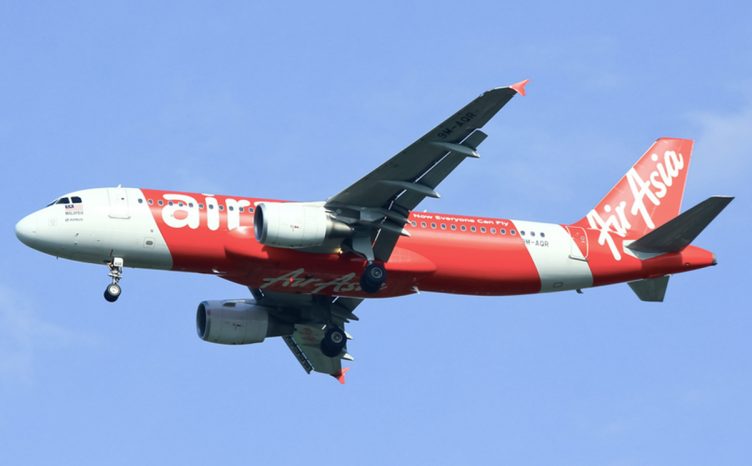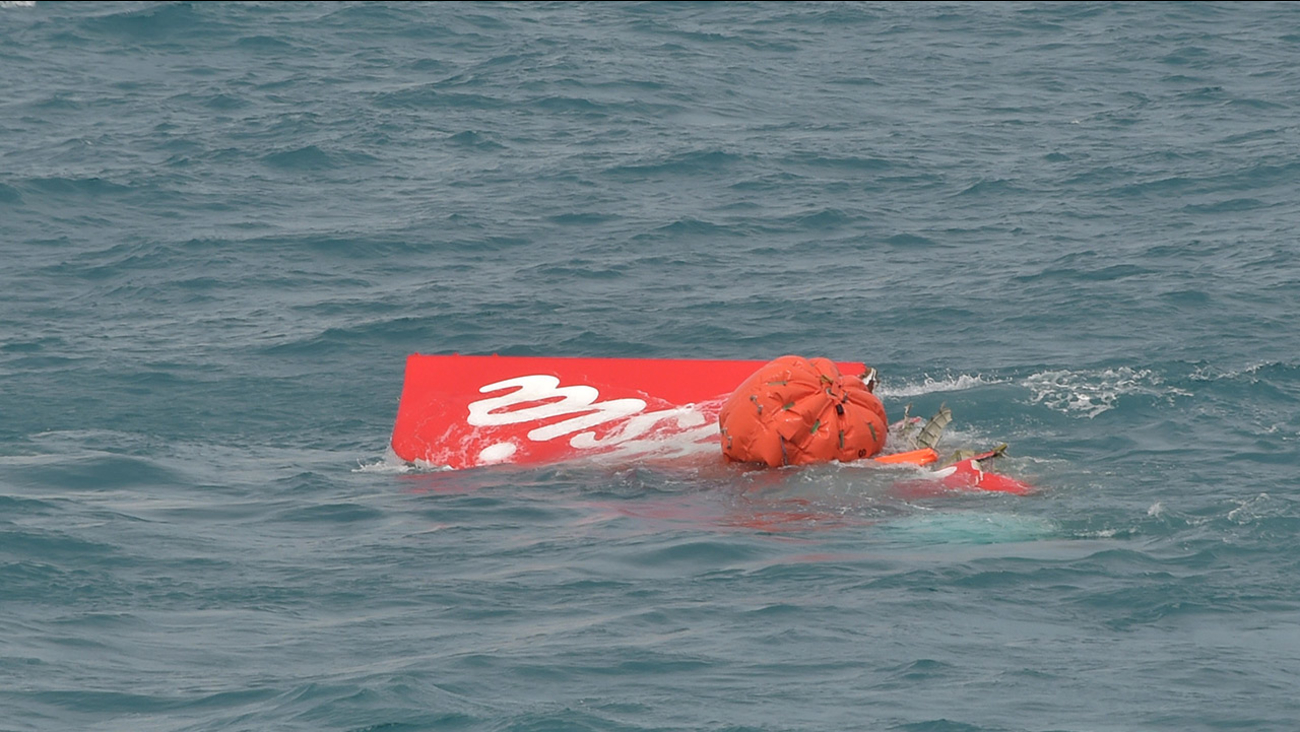28 December 2014 - AirAsia 8501
On 28 December 2014 an Airbus A320-216 aircraft registered as PK-AXC was cruising at 32,000 feet on a flight from Juanda Airport, Surabaya, Indonesia to Changi Airport, Singapore with total occupants of 162 persons. The Pilot in Command (PIC) acted as Pilot Monitoring (PM) and the Second in Command (SIC) acted as Pilot Flying (PF).

The Flight Data Recorder (FDR) recorded that 4 master cautions activated following the failure of the Rudder Travel Limiter which triggered Electronic Centralized Aircraft Monitoring (ECAM) message of AUTO FLT RUD TRV LIM SYS. The crew performed the ECAM procedure on the first three master caution activations. After the 4th master caution, the FDR recorded different pilot action and the parameters showed similar signature to those on 25 December 2014 when the FAC CBs were pulled on the ground. This pilot action resulted on the 5th and 6th master caution activations which correspond respectively to ECAM message of AUTO FLT FAC 1 FAULT and AUTO FLT FAC 1+2 FAULT.
Following two FAC fault, the autopilot and auto-thrust disengaged and the flight control reverted to Alternate Law which means the aircraft lost several protections available in Normal Law. The aircraft entered an upset condition and the stall warning activated until the end of recording.
The investigation concluded that contributing factors to this accident were:
- The cracking of a solder joint of both channel A and B resulted in loss of electrical continuity and led to RTLU failure.
- The existing maintenance data analysis led to unresolved repetitive faults occurring with shorter intervals. The same fault occurred 4 times during the flight.
- The flight crew action to the first 3 faults in accordance with the ECAM messages. Following the fourth fault, the FDR recorded different signatures that were similar to the FAC CB‟s being reset resulting in electrical interruption to the FAC‟s.
- The electrical interruption to the FAC caused the autopilot to disengage and the flight control logic to change from Normal Law to Alternate Law, the rudder deflecting 2° to the left resulting the aircraft rolling up to 54° angle of bank.
- Subsequent flight crew action leading to inability to control the aircraft in the Alternate Law resulted in the aircraft departing from the normal flight envelope and entering prolonged stall condition that was beyond the capability of the flight crew to recover.
The sequence of events retrieved from both of Flight Data Recorder (FDR) and Cockpit Voice Recorder (CVR) were as follows:
2231 UTC, the aircraft started to taxi.
2235 UTC, the aircraft took off.
2249 UTC, the flight reached cruising altitude of 32000 feet (Flight Level 320).
At 2257 UTC, the PF asked for anti-ice ON and the flight attendant announced to the passengers to return to their seat and fasten the seat belt due to weather condition and possibility of turbulence.
At 2300 UTC, the Electronic Centralized Aircraft Monitoring (ECAM) amber advisory AUTO FLT RUD TRV LIM 1 appeared. The PF asked “ECAM action”.
At 2301 UTC, FDR recorded failure on both Rudder Travel Limiter Units and triggered a chime and master caution light. The ECAM message showed “AUTO FLT RUD TRV LIM SYS” (Auto Flight Rudder Travel Limiter System). The PIC read and performed the ECAM action of AUTO FLT RUD TRV LIM SYS to set Flight Augmentation Computer (FAC) 1 and 2 push-buttons on the overhead panel to OFF then to ON one by one. Both Rudder Travel Limiter Units returned to function normally.
At 2304 UTC, the PM requested to the Ujung Pandang Upper West2 controller to deviate 15 miles left of track for weather avoidance and was approved by the controller. The aircraft then flew on a heading of 310°.
At 2306UTC, the SIC conducted cruise crew briefing including in the case of one engine inoperative or emergency descent and that Semarang Airport would be the alternate airport.
At 2309 UTC, the FDR recorded the second failure on both Rudder Travel Limiter Units and triggered a chime and master caution light. The pilots repeated the ECAM action and both Rudder Travel Limiter Units returned to function normally.
At 2311 UTC, the pilot contacted the Jakarta Upper Control3 controller and informed that the flight turned to the left off the M635 to avoid weather. The information was acknowledged and identified on the radar screen by the Jakarta Radar controller. The Jakarta Radar controller instructed the pilot to report when clear of the weather.
At 2312 UTC, the pilot requested for a higher level to FL 380 when possible and the Jakarta Radar controller asked the pilot to standby.
At 2313:41 UTC, the single chime sounded and the amber ECAM message “AUTO FLT RUD TRV LIM SYS” was displayed. This was the third failure on both Rudder Travel Limiter Units on this flight. The pilots performed the ECAM actions and the system returned to function normally.
At 2315:36 UTC, the fourth failure on both Rudder Travel Limiter Units and triggered ECAM message “AUTO FLT RUD TRV LIM SYS”, chime and master caution light.
At 2316 UTC, the Jakarta Radar controller issued a clearance to the pilot to climb to FL 340 but was not replied by the pilot. The Jakarta Radar controller then called the pilot for several times but was not replied.
At 2316:27 UTC, the fifth Master Caution which was triggered by FAC 1 FAULT followed by FDR signature of alteration 4of parameters of components controlled by FAC 1 such as RTLU 1, Windshear Detection 1 and Rudder Travel Limiter Actuator 1.
At 2316:44 UTC, the sixth Master Caution triggered by AUTO FLT FAC 1 + 2 FAULT and followed by FDR signature of alteration of parameters of components controlled by FAC 2 such as RTLU 2, Windshear Detection 2 and Rudder Travel Limiter Actuator 2. The Auto Pilot (A/P) and the Auto-thrust (A/THR) disengaged. Flight control law reverted from Normal Law to Alternate Law. The aircraft started to roll to the left up to 54° angle of bank.
Nine seconds after the autopilot disengaged, the right side-stick activated. The aircraft roll angle reduced to 9° left and then rolled back to 53° left. The input on the right side-stick was mostly pitch up and the aircraft climbed up to approximately 38,000 feet with a climb rate of up to 11,000 feet per minute. At 2317:18 UTC, the stall warning activated and at 2317:22 UTC stopped for 1 second then continued until the end of recording. The first left side stick input was at 2317:03 UTC for 2 seconds and at 2317:15 UTC another input for 2 seconds, then since 2317:29 UTC the input continued until the end of the recording. The right side stick input was mostly at maximum pitch up until the end of recording. The lowest ISIS speed recorded was 55 knots. The ISIS speed recorded fluctuated at an average of 140 knots until the end of the recording. At 2317:41 UTC the aircraft reached the highest ISIS altitude of 38,500 feet and the largest roll angle of 104° to the left. The aircraft then lost altitude with a descent rate of up to 20,000 feet per minute.
At approximately 29,000 feet the aircraft attitude was wings level with pitch and roll angles of approximately zero with the airspeed varied between 100 and 160 knots. The Angle of Attack (AOA)5 was almost constant at approximately 40° up and the stall warning continued until the end of recording. The aircraft then lost altitude with an average rate of 12,000 feet per minute until the end of the recording.

The CVR contained 2 hours and 4 minutes of good quality recording data.
The significant excerpts from the CVR are as follow:
TIME (UTC) FROM TO DESCRIPTION
2257:39 FA Flight Attendant announcement to the passenger related to bad weather condition.
2304:59 PIC SIC The pilot requested to deviate to the left of the track 15 miles. The SIC conducted cruise briefing.
2311:44 JKT RAD QZ8501 Informing that the flight had been identified by Jakarta Radar and requested to the pilot to report when clear of the bad weather.
2311:49 QZ8501 JKT RAD The pilot acknowledged and requested a higher cruising flight level
2311:55 JKT RAD QZ8501 The Jakarta Radar controller asked about the pilot intended altitude
2312:01 QZ8501 JKT RAD The pilot requested to climb to 38,000 feet
23:12:05 JKT RAD QZ8501 The Jakarta Radar informed the pilot to standby for climb.
2313:40 The sound of single chime
2315:35 The sound of single chime
2315:35 JKT RAD Provided clearance to climb to 340
2316:28 The sound of single chime
2316:30 The sound of single chime
2316:44 The sound of single chime
2316:46 The sound similar auto pilot off
2316:55 The sound of stall warning for 1 second
2317:03 PIC SIC “level...level...level” (repeated 4 times)
2317:15 PIC SIC “pull down... pull down..” (repeated 4 times).
2317:17 The sound of stall warning for 4 seconds
2317:23 The sound of stall warning until the end of recording.
2317:33 SIC TOGA
2317:51 PIC SIC “Slowly...slowly....” repeated 5 times
2319:58 PIC SIC PIC requested to select Display Management Computer to CAPT 3.
2320:36 End of recording
Download the full Investigation Report


